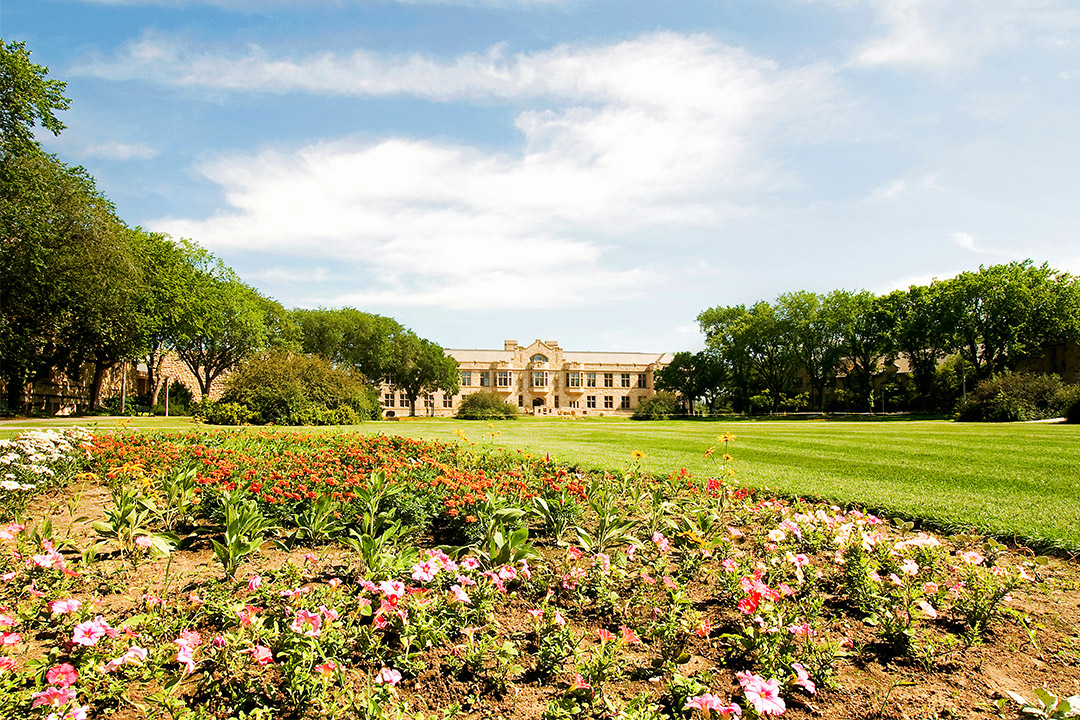
Statement from Vice-Provost, Indigenous Engagement on National Indigenous Peoples Day
The longest day of the year is now upon us. Saturday, June 20 is the summer solstice and the following day is National Indigenous Peoples Day. In reflection of this important day, I am reminded of the spiritual and ceremonial significance that summer solstice has for Indigenous peoples around the world, and I am drawn to reflecting on the expressions of self-determination, such as the creation of an Indigenous Strategy, by Indigenous peoples at the University of Saskatchewan.
The Office of the Vice-Provost Indigenous Engagement is close to releasing the inaugural Indigenous Strategy for the University of Saskatchewan. The September release will begin with a celebration ceremony where Indigenous grandmothers will usher in and gift the strategy to the university. This strategy is unique for a U15 “mainstream” university because it was solely created, informed and validated by the Indigenous community – students, staff, faculty, community leaders, Elders, Traditional Knowledge Keepers, Language Teachers – then presented to the university. Indigenous philosophies (i.e., Seven Generations and All my Relations), languages and stories are engaged for the framework, metaphor and design. Ultimately, this document is more than a strategy – it has spirit because it brings to voice the stories, realities and aspirations of Indigenous peoples; the spirit is also embodied in the name of which it was gifted. In the creation of the Indigenous Strategy, Indigenous peoples had the uninterrupted space to teach, share, tell stories and project aspirations of strength and hope into the future for children generations into the future. The process enacted parallel development, which is the space to move forward in self-determined ways, not in isolation but in community – with All my Relations. Parallel development is described in the Royal Commission on Aboriginal Peoples (1996) and demonstrated in early agreements such as the 1613 Gusweñta treaty agreement (documented in the two-row wampum belt) between Indigenous and non-Indigenous peoples.
I describe the Indigenous strategic process because it is an example of working towards right relations, of wicihitowin (working together) with Indigenous peoples, and it is an example of the honouring of First Nations, Métis and Inuit peoples through bold and non-apologetic actions such as (re)positioning Indigenous peoples from the margins into the rightful place of respectful prominence and recognition as North America’s original peoples and nations – nations that had, and continues to have, sophisticated and complex governance, educational, health, social and economic systems. The Indigenous Strategy is a beautiful and strong expression of self-determination by the Indigenous Peoples of this province, and it is a document that will benefit all peoples. It invites us to nīkānītān manācihitowinihk (Cree), ni manachīhitoonaan (Michif), for us to “lead with respect”. With this in mind, I ask people to consider more sustained personal and professional actions that go beyond the events related to National Indigenous Peoples Day.
What do we know about the realization of this day? In 1996, 24 years ago, Governor General Romeo LeBanc proclaimed June 21 (the summer solstice) as National Aboriginal Day. He sated, “On June 21st, this year and every year, Canada will honour the native peoples who first brought humanity to this great land and may the first peoples of our past always be full and proud partners of the future.”
This day became a reality because of the persistent advocacy by Indigenous leadership:
- In 1982, the National Indian Brotherhood (now the Assembly of First Nations) called for the creation of National Aboriginal Solidarity Day;
- In 1995, the Sacred Assembly, a national conference of Indigenous and non-Indigenous people chaired by Elijah Harper, called for a national holiday to celebrate the contributions of Indigenous Peoples; and
- In 1995, the Royal Commission on Aboriginal Peoples recommended the designation of a National First Peoples Day.
The name was changed to National Indigenous Peoples Day in 2017.
More than a day but a month. In 2009, 11 years ago, the House of Commons unanimously passed a motion to designate June as National Indigenous History Month. This month, all Canadians are encouraged to respectfully seek knowledge about Indigenous histories, cultures, stories, contributions, and current realities; and to perhaps deepen relationships with Indigenous peoples. Another day when we can stand united with Indigenous peoples from around the world is on August 9, which is International Day of the World’s Indigenous Peoples. This day became a reality on December of 1994 through resolution by the United Nations General Assembly.
Canada and our world can only be strengthened by Indigenous knowledges, ways of being and doing. How can we listen, learn and relate? Below are some places to begin your journey of rich exploration:
Office of the Treaty Commissioner
Saskatoon Indian and Métis Friendship Centre
Dr. Jacqueline Ottmann
Vice-Provost, Indigenous Engagement
University of Saskatchewan
Article re-posted on .
View original article.

